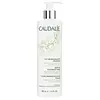What's inside
What's inside
 Key Ingredients
Key Ingredients

No key ingredients
 Benefits
Benefits

 Concerns
Concerns

 Ingredients Side-by-side
Ingredients Side-by-side

Water
Skin ConditioningCetearyl Isononanoate
EmollientButylene Glycol
HumectantGlycerin
HumectantCetyl Alcohol
EmollientPrunus Amygdalus Dulcis Oil
Skin ConditioningSimmondsia Chinensis Seed Oil
EmollientSodium Cocoyl Glutamate
CleansingDecyl Glucoside
CleansingButyrospermum Parkii Butter Extract
Skin ConditioningMaltodextrin
AbsorbentCarbomer
Emulsion StabilisingPotassium Cetyl Phosphate
EmulsifyingCaprylyl Glycol
EmollientHydrolyzed Vegetable Protein
Skin ConditioningAcrylates/C10-30 Alkyl Acrylate Crosspolymer
Emulsion StabilisingPotassium Sorbate
PreservativeSodium Hydroxide
BufferingTrehalose
HumectantTocopherol
AntioxidantParfum
MaskingAvena Sativa Kernel Extract
AbrasiveCentaurea Cyanus Flower Extract
AstringentPalmitoyl Grape Seed Extract
Skin ConditioningHexyl Cinnamal
PerfumingLinalool
PerfumingLimonene
PerfumingPlant Ash
Water, Cetearyl Isononanoate, Butylene Glycol, Glycerin, Cetyl Alcohol, Prunus Amygdalus Dulcis Oil, Simmondsia Chinensis Seed Oil, Sodium Cocoyl Glutamate, Decyl Glucoside, Butyrospermum Parkii Butter Extract, Maltodextrin, Carbomer, Potassium Cetyl Phosphate, Caprylyl Glycol, Hydrolyzed Vegetable Protein, Acrylates/C10-30 Alkyl Acrylate Crosspolymer, Potassium Sorbate, Sodium Hydroxide, Trehalose, Tocopherol, Parfum, Avena Sativa Kernel Extract, Centaurea Cyanus Flower Extract, Palmitoyl Grape Seed Extract, Hexyl Cinnamal, Linalool, Limonene, Plant Ash
Water
Skin ConditioningPropylene Glycol
HumectantLauroyl/Myristoyl Methyl Glucamide
EmollientCetearyl Alcohol
EmollientGlyceryl Stearate Se
EmulsifyingEthylhexyl Palmitate
EmollientOctyldodecanol
EmollientCeteareth-25
CleansingPalmitic Acid
EmollientStearic Acid
CleansingGlycerin
HumectantAloe Barbadensis Leaf Extract
EmollientMaltodextrin
AbsorbentParfum
MaskingAllantoin
Skin ConditioningXanthan Gum
EmulsifyingLactic Acid
BufferingMethylchloroisothiazolinone
PreservativeMethylisothiazolinone
PreservativeWater, Propylene Glycol, Lauroyl/Myristoyl Methyl Glucamide, Cetearyl Alcohol, Glyceryl Stearate Se, Ethylhexyl Palmitate, Octyldodecanol, Ceteareth-25, Palmitic Acid, Stearic Acid, Glycerin, Aloe Barbadensis Leaf Extract, Maltodextrin, Parfum, Allantoin, Xanthan Gum, Lactic Acid, Methylchloroisothiazolinone, Methylisothiazolinone
 Reviews
Reviews

Ingredients Explained
These ingredients are found in both products.
Ingredients higher up in an ingredient list are typically present in a larger amount.
Glycerin is already naturally found in your skin. It helps moisturize and protect your skin.
A study from 2016 found glycerin to be more effective as a humectant than AHAs and hyaluronic acid.
As a humectant, it helps the skin stay hydrated by pulling moisture to your skin. The low molecular weight of glycerin allows it to pull moisture into the deeper layers of your skin.
Hydrated skin improves your skin barrier; Your skin barrier helps protect against irritants and bacteria.
Glycerin has also been found to have antimicrobial and antiviral properties. Due to these properties, glycerin is often used in wound and burn treatments.
In cosmetics, glycerin is usually derived from plants such as soybean or palm. However, it can also be sourced from animals, such as tallow or animal fat.
This ingredient is organic, colorless, odorless, and non-toxic.
Glycerin is the name for this ingredient in American English. British English uses Glycerol/Glycerine.
Learn more about GlycerinMaltodextrin is a polysaccharide. It is derived from starch such as rice, corn, wheat, or potato starch.
In food, Maltodextrin is used to improve the texture and thicken a product. Due to its structure, it can help create a gel texture. As an emulsion stabilizer, it helps keep the ingredients in a product together.
As a polysaccharide, Maltodextrin has moisturizing properties. Polysaccharides are a type of carbohydrate. The top layer of skin uses polysaccharides to retain water, keeping the skin hydrated.
Maltodextrin is water soluble and has a sweet taste.
Learn more about MaltodextrinParfum is a catch-all term for an ingredient or more that is used to give a scent to products.
Also called "fragrance", this ingredient can be a blend of hundreds of chemicals or plant oils. This means every product with "fragrance" or "parfum" in the ingredients list is a different mixture.
For instance, Habanolide is a proprietary trade name for a specific aroma chemical. When used as a fragrance ingredient in cosmetics, most aroma chemicals fall under the broad labeling category of “FRAGRANCE” or “PARFUM” according to EU and US regulations.
The term 'parfum' or 'fragrance' is not regulated in many countries. In many cases, it is up to the brand to define this term.
For instance, many brands choose to label themselves as "fragrance-free" because they are not using synthetic fragrances. However, their products may still contain ingredients such as essential oils that are considered a fragrance by INCI standards.
One example is Calendula flower extract. Calendula is an essential oil that still imparts a scent or 'fragrance'.
Depending on the blend, the ingredients in the mixture can cause allergies and sensitivities on the skin. Some ingredients that are known EU allergens include linalool and citronellol.
Parfum can also be used to mask or cover an unpleasant scent.
The bottom line is: not all fragrances/parfum/ingredients are created equally. If you are worried about fragrances, we recommend taking a closer look at an ingredient. And of course, we always recommend speaking with a professional.
Learn more about ParfumWater. It's the most common cosmetic ingredient of all. You'll usually see it at the top of ingredient lists, meaning that it makes up the largest part of the product.
So why is it so popular? Water most often acts as a solvent - this means that it helps dissolve other ingredients into the formulation.
You'll also recognize water as that liquid we all need to stay alive. If you see this, drink a glass of water. Stay hydrated!
Learn more about Water